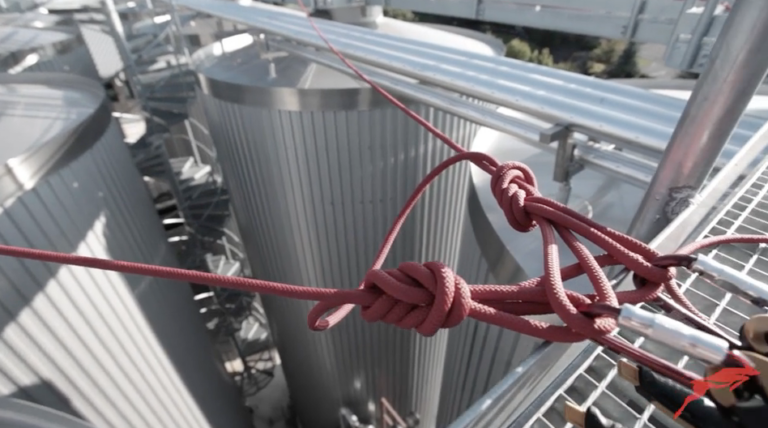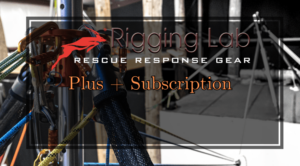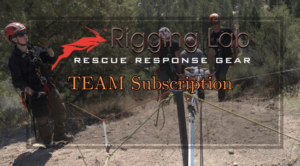Can I Lash the Legs (AHD) to a Handrail? Understanding Rigging Safety and Best Practices
When setting up a rigging system, questions often arise about the suitability of using existing structures, such as handrails, as anchor points. While it may seem convenient to lash tripod legs or other rigging equipment to a handrail, this practice is generally not recommended due to several significant safety concerns. Below, we explore why lashing to a handrail is not advisable and provide safer alternatives for rigging setups.
Why Lashing to a Handrail Is Not Recommended
Using a handrail as an anchor point for rigging introduces several risks:
- Handrails Are Not Rated for Rigging Loads: Handrails are primarily intended to withstand lateral forces from individuals leaning on them. They are not rated to handle the vertical and dynamic loads imposed by rigging systems. Overloading a handrail can lead to structural failure.
- Compromised Structural Integrity: Lashing to a handrail can weaken its ability to function as a safety barrier. The added stress from rigging loads may cause the handrail to bend, break, or become loose from its mounting points.
- Risk of Damage: There is a risk of damaging both the handrail and the item being lashed to it. Handrails are typically made from materials that are not designed to endure the wear and tear of rigging applications.
- Violation of Safety Regulations: Workplace safety regulations, such as OSHA standards, specify that guardrails must withstand a minimum force of 200 pounds applied in any downward or outward direction. Rigging systems often exert forces well beyond this limit, making the use of handrails as anchor points non-compliant with safety standards.
Safer Alternatives to Lashing Legs to a Handrail
Instead of using a handrail as an anchor point, consider these safer and more appropriate alternatives:
- Use Properly Rated Anchor Points: Always use anchor points that are specifically designed and rated for rigging purposes. These anchor points should be capable of withstanding the anticipated loads with an adequate safety margin.
- Employ Rigging Equipment: Utilize appropriate rigging equipment, such as slings, shackles, or purpose-built brackets, to secure loads safely. These tools are designed to handle the forces involved in rigging applications.
- Consult a Qualified Rigger: Before setting up any rigging system, especially in environments not designed for such activities, consult with a qualified rigger or structural engineer. They can assess the situation and recommend the safest and most compliant setup.
- Temporary Securing Methods: If you must secure something temporarily to a structure, ensure it is done safely and in compliance with safety standards. Always consult with a qualified professional to verify that the temporary setup does not compromise the integrity of existing safety features like handrails.
Understanding Regulatory Compliance
Adhering to workplace safety regulations is essential when setting up rigging systems. Here are key requirements from OSHA and ANSI:
- Guardrails Must Withstand a Force of at Least 200 Pounds: This applies to any downward or outward force. Using a handrail for rigging purposes can exceed this limit, leading to non-compliance.
- Anchor Points Must Be Designed and Installed by Qualified Personnel: Rigging systems must be designed, installed, and used under the supervision of qualified professionals to ensure they meet safety requirements.
Handrail Load Capacity
Understanding the load capacity of handrails helps illustrate why they are unsuitable for rigging:
- OSHA Standards: Handrails and the top rails of stair rail systems must withstand a force of at least 200 pounds (890 N) applied in any downward or outward direction within 2 inches of any point along the top edge.
- Limitations for Rigging: Rigging operations often involve loads that far exceed this 200-pound capacity. Utilizing handrails as anchor points can lead to structural failure, compromising safety.
Anchor Point Requirements for Rigging
Anchor points must meet certain strength requirements to be considered safe:
- OSHA Requirements: For personal fall arrest systems, OSHA mandates that anchorages must support at least 5,000 pounds (22.2 kN) per employee attached. Alternatively, they can be designed with a safety factor of at least two under the supervision of a qualified person.
- ANSI Standards: The American National Standards Institute (ANSI) specifies that non-certified anchorages should support 5,000 pounds for fall arrest and 3,000 pounds for work positioning systems. Certified anchorages must support at least twice the maximum anticipated force.
Comparison and Implications
Comparing handrails to proper rigging anchor points highlights why using handrails is unsafe:
- Handrails vs. Rigging Anchor Points: Handrails are engineered to support minimal loads (200 pounds), primarily to prevent falls. In contrast, rigging anchor points are designed to endure significantly higher forces (5,000 pounds or more) to safely arrest falls or support equipment.
- Safety Risks: Using a handrail as an anchor point for rigging can result in catastrophic failure due to its inadequate load capacity, leading to accidents and potential injuries.
Recommendations
Follow these best practices to ensure safe and compliant rigging setups:
- Use Appropriate Anchor Points: Always utilize anchor points specifically designed and rated for the loads expected in rigging operations.
- Consult Professionals: Engage with qualified rigging professionals or structural engineers to assess and select suitable anchor points that comply with OSHA and ANSI standards.
Conclusion
Lashing the legs of a tripod or other rigging equipment to a handrail may seem like a quick solution, but it poses significant safety risks and can violate workplace safety regulations. Handrails are not designed to handle the loads imposed by rigging systems and can fail under stress. Instead, use properly rated anchor points and appropriate rigging equipment to ensure a safe and compliant setup. Always consult with qualified professionals to assess the situation and select the best solutions for your rigging needs.
For more insights on rigging safety and best practices, visit our Rigging Journal.
Peace on your days,
Lance










